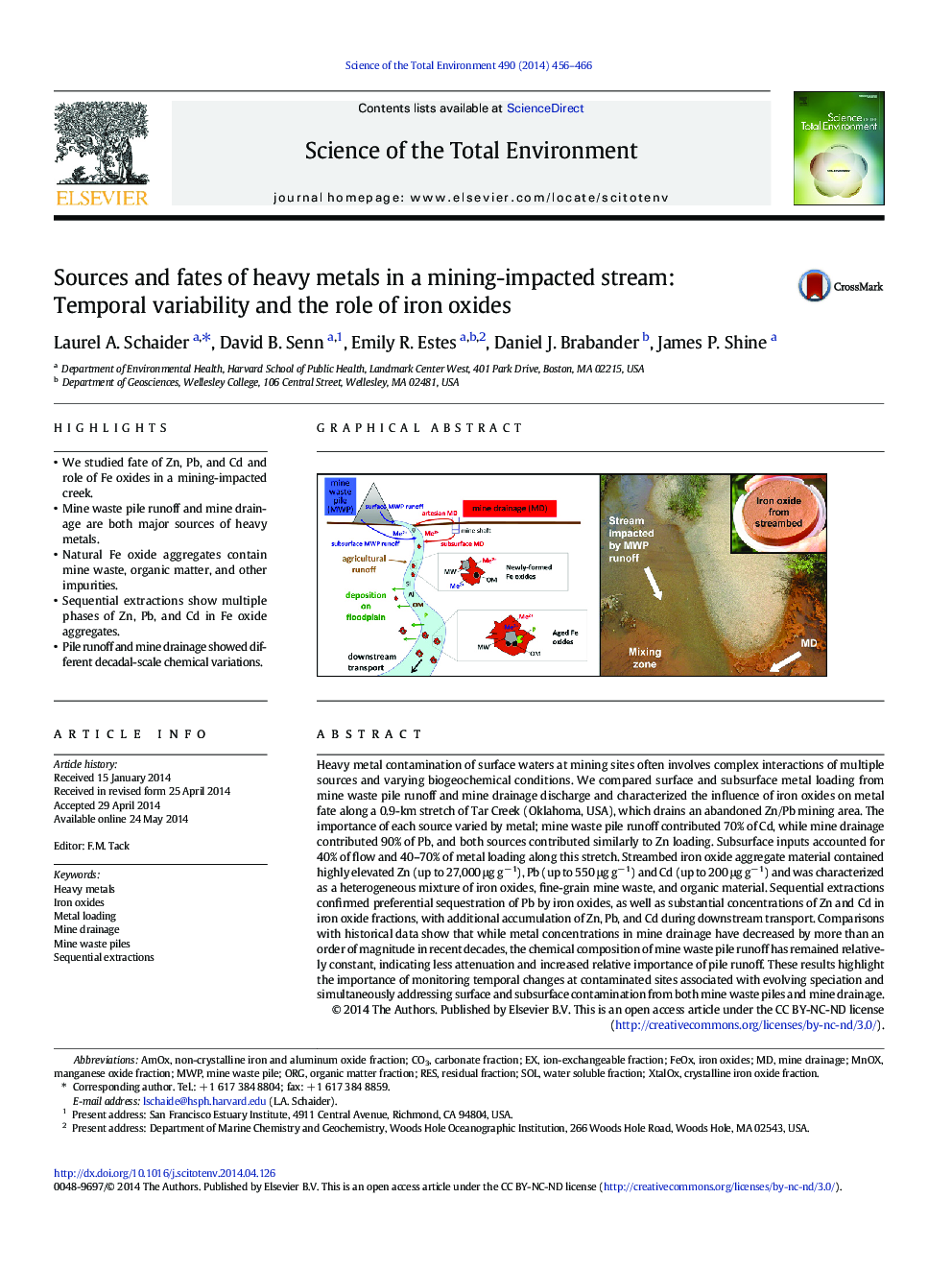| Article ID | Journal | Published Year | Pages | File Type |
|---|---|---|---|---|
| 6329118 | Science of The Total Environment | 2014 | 11 Pages |
â¢We studied fate of Zn, Pb, and Cd and role of Fe oxides in a mining-impacted creek.â¢Mine waste pile runoff and mine drainage are both major sources of heavy metals.â¢Natural Fe oxide aggregates contain mine waste, organic matter, and other impurities.â¢Sequential extractions show multiple phases of Zn, Pb, and Cd in Fe oxide aggregates.â¢Pile runoff and mine drainage showed different decadal-scale chemical variations.
Heavy metal contamination of surface waters at mining sites often involves complex interactions of multiple sources and varying biogeochemical conditions. We compared surface and subsurface metal loading from mine waste pile runoff and mine drainage discharge and characterized the influence of iron oxides on metal fate along a 0.9-km stretch of Tar Creek (Oklahoma, USA), which drains an abandoned Zn/Pb mining area. The importance of each source varied by metal; mine waste pile runoff contributed 70% of Cd, while mine drainage contributed 90% of Pb, and both sources contributed similarly to Zn loading. Subsurface inputs accounted for 40% of flow and 40-70% of metal loading along this stretch. Streambed iron oxide aggregate material contained highly elevated Zn (up to 27,000 μg gâ 1), Pb (up to 550 μg gâ 1) and Cd (up to 200 μg gâ 1) and was characterized as a heterogeneous mixture of iron oxides, fine-grain mine waste, and organic material. Sequential extractions confirmed preferential sequestration of Pb by iron oxides, as well as substantial concentrations of Zn and Cd in iron oxide fractions, with additional accumulation of Zn, Pb, and Cd during downstream transport. Comparisons with historical data show that while metal concentrations in mine drainage have decreased by more than an order of magnitude in recent decades, the chemical composition of mine waste pile runoff has remained relatively constant, indicating less attenuation and increased relative importance of pile runoff. These results highlight the importance of monitoring temporal changes at contaminated sites associated with evolving speciation and simultaneously addressing surface and subsurface contamination from both mine waste piles and mine drainage.
Graphical abstractDownload full-size image
